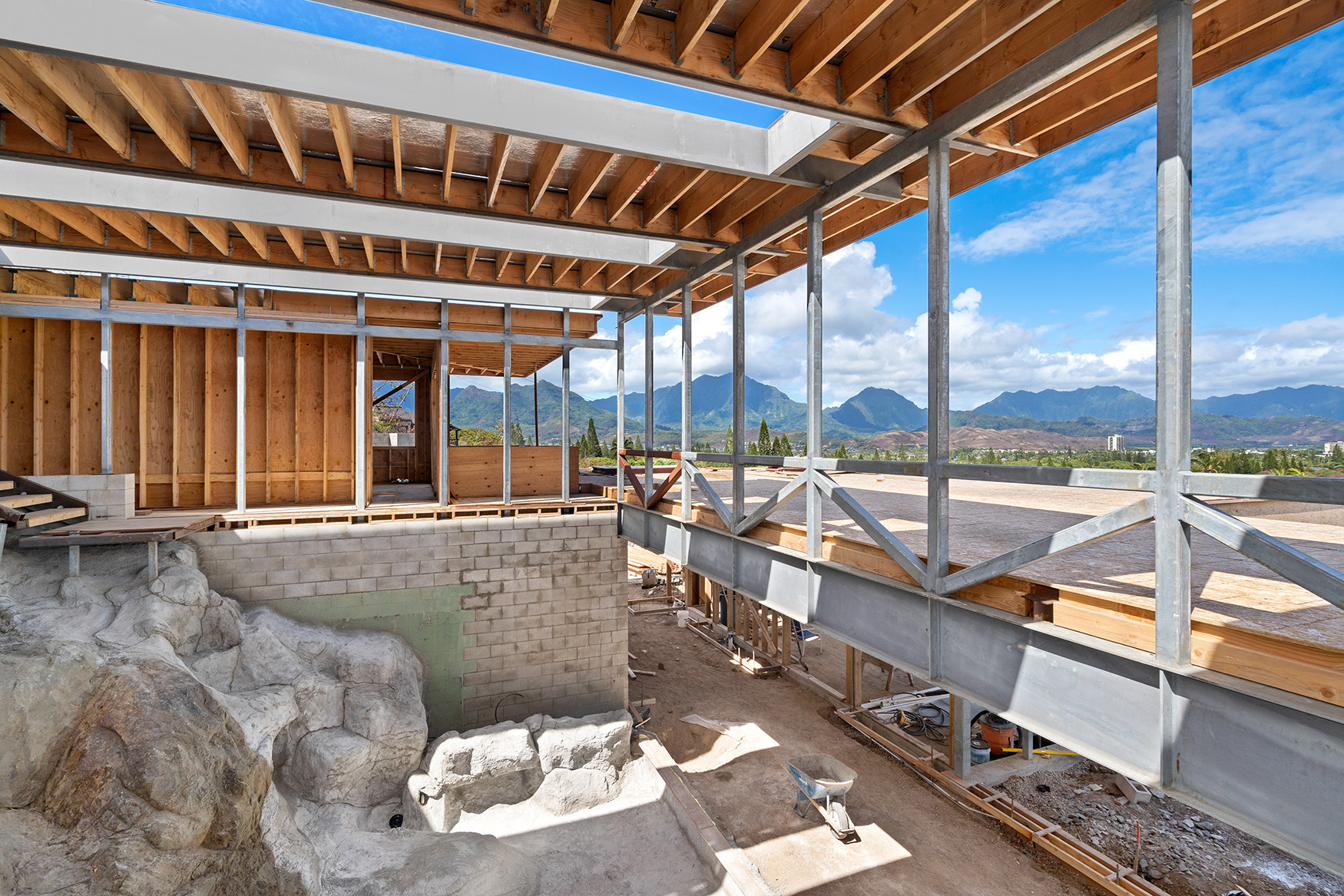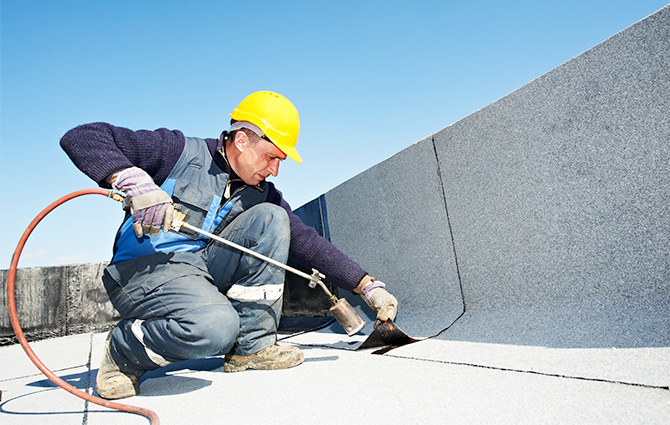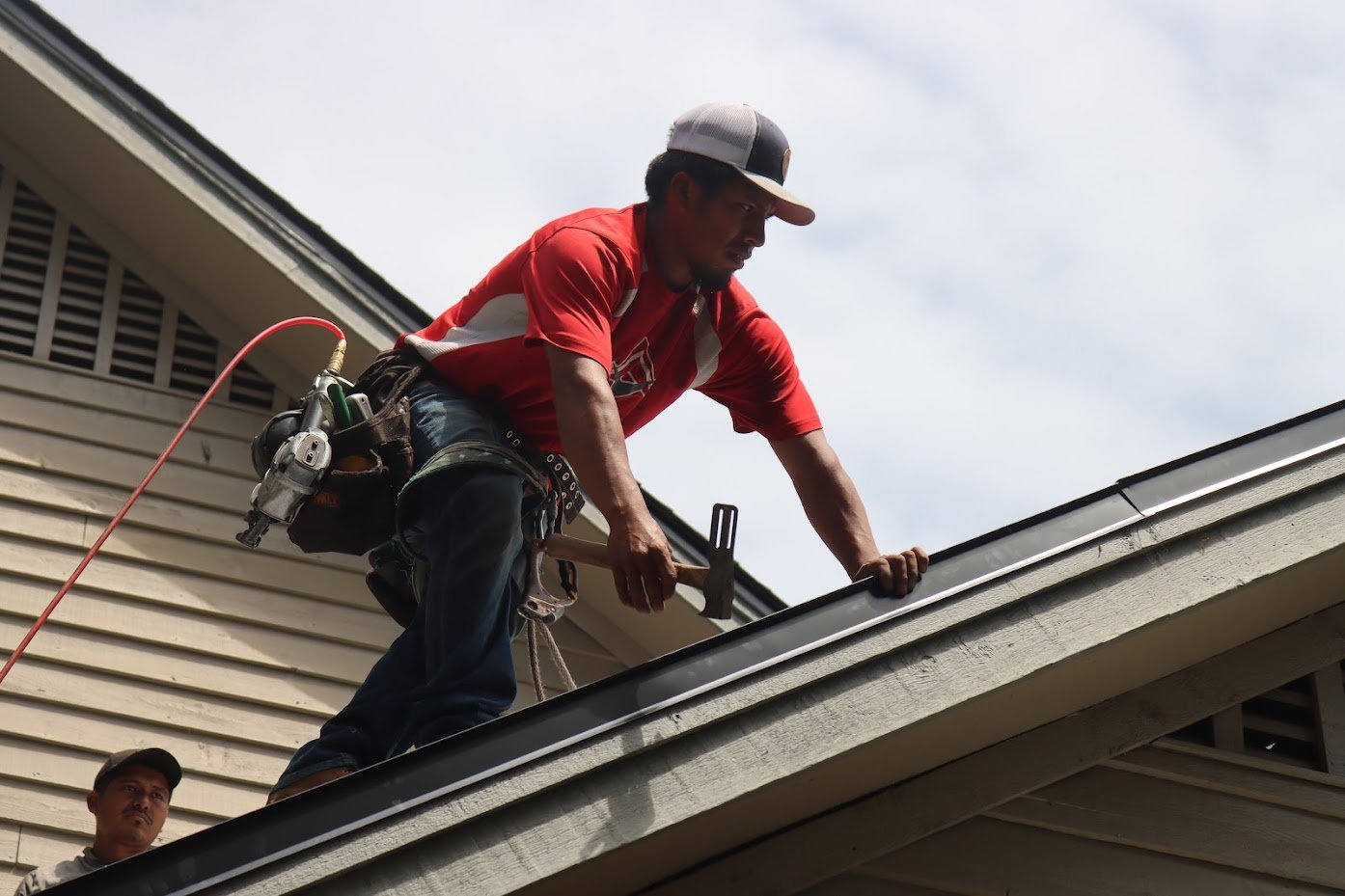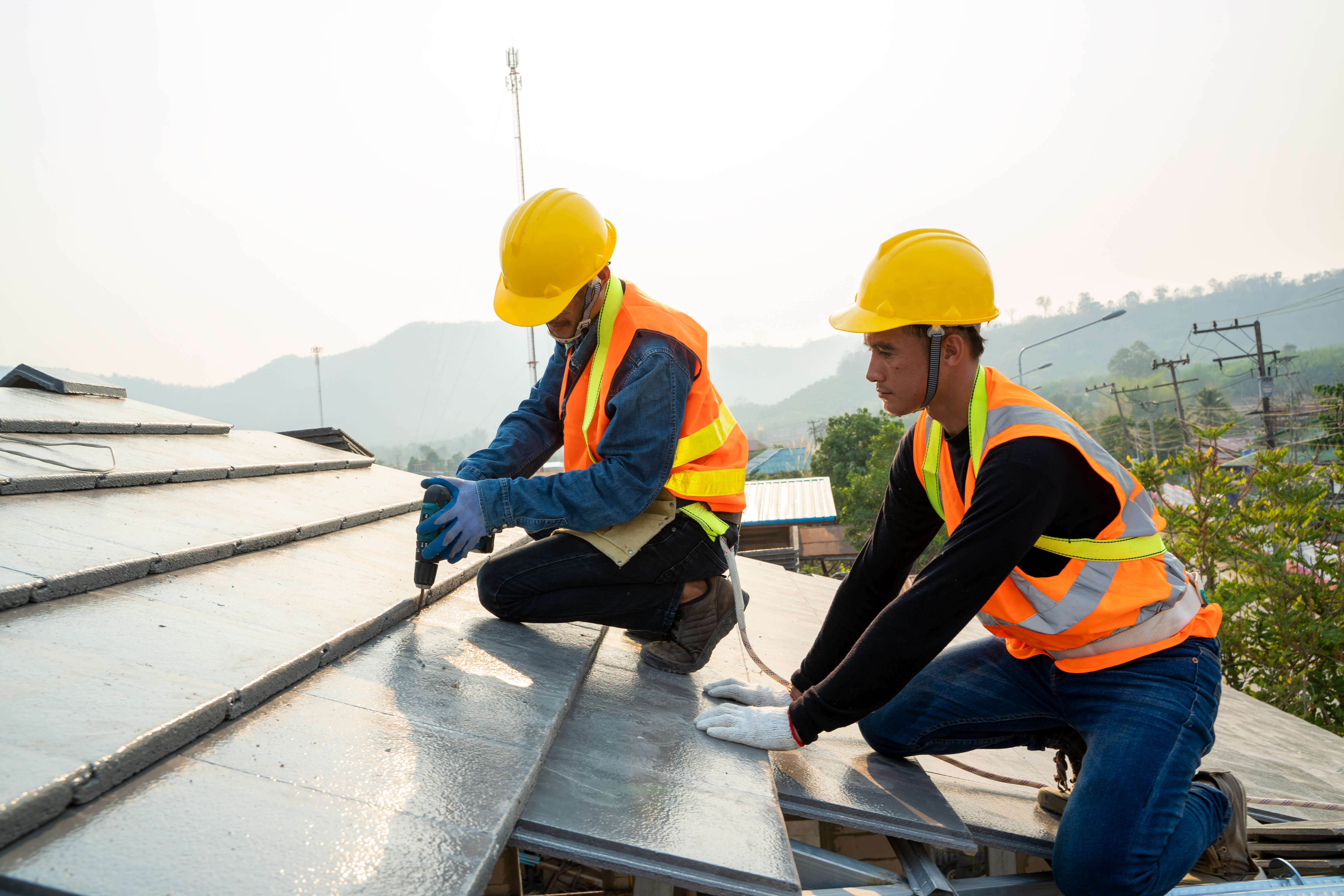Typical Fixings in Roof That Every Property Owner Must Understand
As a homeowner, it's vital to recognize common roofing problems that can result in substantial issues down the line. Roofing leakages, tile damages, and clogged up gutters can all endanger your home's honesty. Overlooking these repair work could cost you a lot more in the future. Understanding exactly how to resolve these issues can conserve you time and cash. What actions can you take to ensure your roofing remains in top condition?
Recognizing Roofing System Leakages
Exactly how do you recognize if your roofing is dripping? Begin by checking your ceilings and wall surfaces for water discolorations or discoloration. If you notice dark places or peeling paint, that's a red flag. Next off, examine your attic room. Search for moist insulation or water beads on beam of lights, which can suggest a leak. Throughout rains, order a flashlight and check for any signs of moisture. Take note of the roofing's incline and valleys, as these locations frequently gather water.
Don't forget to examine your roof from the exterior. Look for missing out on or split shingles, as they can produce entry factors for water. In addition, inspect blinking around vents and smokeshafts; harmed flashing can cause leaks. It's important to act rapidly if you presume a leakage. Overlooking the concern can lead to more severe damages and pricey repairs down the line. Depend on your reactions and investigate even more if you see any indication.
Roof Shingles Damages and Replacement
When it comes to roof covering, tile damages can cause bigger problems otherwise dealt with promptly. You'll wish to identify the different kinds of damage and recognize the steps for changing your shingles. Allow's explore what you require to do to maintain your roof in top shape.
Kinds of Shingle Damage
Although shingles are designed to endure the components, numerous sorts of damage can jeopardize their stability over time. One usual problem is curling, where the edges or edges of the tiles raise up, typically due to age or improper installment. Breaking can additionally occur, normally from extreme temperature level fluctuations or influence. Missing roof shingles are another issue; high winds or falling debris can quickly displace them. In addition, you may notice granule loss, where the protective granules put on away, subjecting the underlying product to UV rays and moisture. Finally, algae growth can establish, resulting in unsightly streaks and prospective destruction. Recognizing these kinds of tile damage allows you to attend to concerns quickly and maintain your roofing system's condition.
Replacement Process Steps
Changing harmed roof shingles entails an organized approach to assure your roofing stays sturdy and safety. Start by determining the damaged roof shingles-- check for splits, curling, or missing out on pieces (oahu roofing). Once you've pinpointed the trouble locations, collect your products: new shingles, roofing nails, and a hammer
Next, thoroughly get rid of the harmed tiles, making sure not to disrupt the surrounding ones. With these actions, you can restore your roofing's stability and lengthen its life expectancy.
Clogged Gutters and Downspouts
When debris accumulates, it protects against water from moving away from your roof covering and structure. This can cause water to swimming pool on your roof covering, raising the risk of leakages and damages to your tiles.

To avoid these problems, you should on a regular basis clean your gutters and downspouts, especially throughout the autumn when leaves abound. If you're awkward doing it yourself, it's an excellent idea to use a ladder securely or employ an expert. You can also set up rain gutter guards to minimize particles accumulation. Remember, keeping clear gutters is important for securing your home's roof and overall stability. Normal checks will save you money and inconvenience down the line, guaranteeing your roof system operates properly.
Blinking Problems
When it pertains to your roof, flashing plays an essential function in avoiding leakages. You must understand the various kinds of blinking materials and the typical problems that can occur. Recognizing exactly how to fix these issues can conserve you money and time down the line.
Kinds Of Flashing Products
Flashing products play a crucial function in avoiding water leaks and protecting your roof. There are a number of types you ought to consider for your home. Light weight aluminum blinking is lightweight, rust-resistant, and easy to install, making it popular for many roofing systems. There's copper blinking, recognized for its toughness and aesthetic appeal, usually used in premium applications. If you're seeking versatility, rubberized flashing can adjust to various roofing forms, offering strong seals. Finally, you could come across vinyl flashing, which provides exceptional resistance to wetness yet isn't as long lasting as metal choices. Choosing the right blinking product can substantially improve your roof's long life and effectiveness, so be sure to consider your alternatives thoroughly.
Common Flashing Troubles
Also the finest flashing can run into issues over time, leading to possible leaks and damage. If the blinking isn't fitted comfortably against the roof covering, water can seep below, triggering rot and mold. An additional trouble is corrosion, specifically with steel blinking, which can damage over time due to direct exposure to the aspects.
Flashing Repair Techniques
Dealing with blinking problems quickly can protect against additional damages to your roof. For more substantial damages, consider replacing the flashing completely. Remove the old blinking, guaranteeing the location is clean, and after that set up the new blinking, protecting it with nails and applying sealer.
Air Flow Issues
When your roof lacks appropriate ventilation, it can cause a host of problems that endanger its honesty and your home's convenience. Poor air flow catches heat and wetness in your attic, causing roof shingles to degrade faster and advertising mold and mildew growth. This can raise your energy costs as your a/c system burns the midnight oil to maintain a comfy temperature level.

On a regular basis examining your ventilation system is essential, specifically after extreme weather or changes in the periods. Don't hesitate to call a roof specialist if you locate your check it out roofing system isn't ventilated appropriately. They'll help guarantee your roof remains in leading problem, shielding your investment and improving your home.
Roof Punctures and Holes
Poor ventilation isn't the only threat to your roofing's stability; roof leaks and holes can lead to significant problems. These openings can permit water to seep right into your home, triggering mold and mildew, architectural damage, and pricey repairs. You could not also discover a puncture up until it's far too late, especially if it's tiny or hidden under roof materials.
Normal examinations are crucial. Check your roofing system after hefty storms or severe weather, as debris can easily create punctures. If you find any kind of openings, don't hesitate to act. You may be tempted to spot them up yourself, however it's often best to call a professional. They can guarantee an appropriate repair service and avoid additional damages. Keep in mind, dealing with roof punctures and openings promptly shields your home and saves you money in the future. Maintain your roof in leading condition by staying vigilant about its upkeep.
Moss and Algae Growth
Moss and algae growth can quietly take hold on your roof covering, causing significant concerns in time. These organisms grow in damp, shaded areas, commonly causing an accumulation of moisture that can deteriorate roofing products. If you observe eco-friendly streaks or patches, it's a sign that you need to act swiftly.

You can remove moss and algae making use of a blend of water and bleach or by working with useful source an expert. Mounting zinc or copper strips along the ridge of your roofing can additionally prevent future growth. Staying proactive will certainly help maintain your roof's integrity and avoid costly repair work down the line.
Often Asked Inquiries
Just how Commonly Should I Evaluate My Roof for Issues?
You should check your roofing at the very least two times a year, preferably in spring and loss. Inspect it after severe weather condition events. Normal examinations assist you catch possible concerns before they end up being costly fixings.
Can I Carry Out Roofing Repairs Myself?
You can do roof covering repair services yourself, yet it's crucial you examine your abilities and safety and security. If you're unclear, take into consideration hiring an expert. When to seek help for much more complicated concerns., always focus on security and know.
What Are the Indications I Required a Roof Covering Replacement?
You'll know it's time for a roofing substitute if you find significant leakages, considerable roof shingles damages, sagging areas, or visible mold and mildew. Don't wait too long; resolving these signs early can conserve you money over time.
Exactly how Long Does a Roof Covering Repair Commonly Last?
A roof repair usually lasts anywhere from 5 to 15 years, depending on products and problems. oahu roofing. You should check its problem on a regular basis to catch any prospective concerns before they rise into bigger issues
What Is the very best Period for Roofing System Fixes?
The most effective season for roof covering repair work is typically spring or autumn. Throughout these times, temperatures are mild, and weather are more steady, allowing contractors to function successfully and guaranteeing your roof obtains the focus it requires.
Conclusion
To summarize, remaining on top of common roof covering repairs can save you time and money in the long run. By on a regular basis looking for leakages, roof shingles damages, and clogged gutters, you're safeguarding your home from significant issues. Don't fail to remember to deal with ventilation problems and any type of moss or algae growth, also. Watching on these factors will certainly assist maintain your roof's integrity and prolong its life expectancy, inevitably safeguarding your investment for years to come.

Replacing harmed tiles includes a systematic approach to guarantee your roof covering continues to be resilient and safety.Attending to flashing problems quickly can avoid further damage to your roofing system.Poor ventilation isn't the only threat to your roof's integrity; roof leaks and openings can lead to major issues.